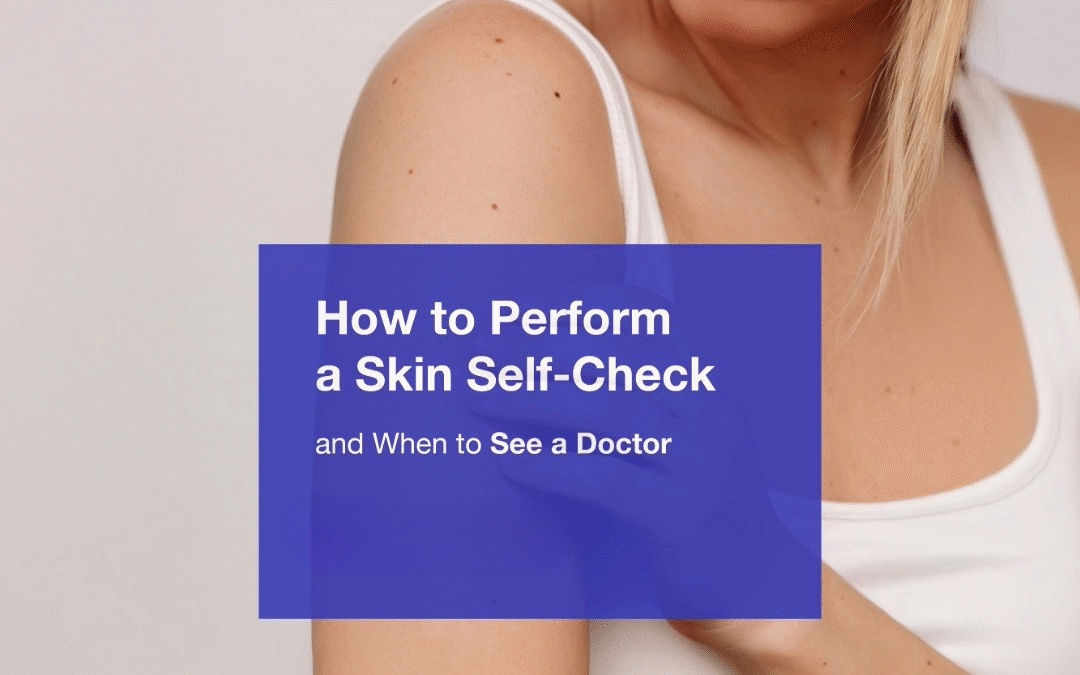When it comes to skin cancer, early detection can make all the difference—and one of the most effective tools is a regular skin self-check. This simple at-home practice helps you become familiar with your skin so you can notice new or changing spots early, when treatment is most successful.
Whether you’re keeping an eye on an existing mole, noticing a new spot, or just being proactive, getting to know your skin, and what’s normal for you, can help catch potential problems before they become serious.
Why Skin Self-Checks Matter
Skin cancer is the most common cancer in the United States, with 1 in 5 Americans developing it by age 70. While routine visits with a physician are important, most skin cancers are found first by the person who has them.
Regular self-checks help you:
-
Spot new or changing moles or spots early
-
Track anything unusual between check-ups
-
Know when it’s time to contact your healthcare provider
What to Look For: Use the ABCDE Rule
When you start your skin self-check, keep the ABCDEs in mind:
-
A = Asymmetry: one half doesn’t match the other
-
B = Border: edges are irregular, blurred, or notched
-
C = Color: varies in color, shades of brown, black, red, white, or blue
-
D = Diameter: larger than 6mm or about the size of a pencil eraser
-
E = Evolving: changes in size, shape, color, or behavior (itching, bleeding, etc.)
Also look for new growths or sores that don’t heal, spots that itch, bleed, or crust over, and any mole that feels different or stands out from the rest.
What You’ll Need and How to Do a Head-to-Toe Skin Check:
-
Full length mirror
-
Hand mirror
-
Good lighting
-
Chair or stool (optional, for checking feet or legs)
-
A way to track any changes, this could be a skin map, photos, or a notes app
Follow these simple steps to examine your entire body:
- Start with your face, neck, and ears. Don’t forget behind your ears and along your hairline.
- Check your scalp. Use a comb or hairdryer to part your hair and check your scalp with a mirror or ask someone to help.
- Look at your hands and arms. Check your palms, the backs of your hands, between fingers, under fingernails, and both sides of your arms.
- Examine your torso. Look at your chest, stomach, underarms, and under your breasts if possible.
- Use a hand mirror to check your back and shoulders. You can also turn your back to a large mirror and use a hand mirror to see hard-to-reach areas.
- Check your legs and feet. Look at the fronts and backs of your legs, between your toes, the soles of your feet, and under your toenails.
How Often Should You Do a Skin Check?
Aim to check your skin once a month. It’s quick, easy, and helps you get familiar with your skin so you can notice changes more confidently over time.
When to See a Doctor
If you notice anything new, changing, or unusual, schedule an appointment with your doctor. Even if it turns out to be nothing, it’s better to be safe and catch potential issues early. You should also consider a professional skin check if:
-
You have a history of sunburns or tanning bed use
-
You have had skin cancer in the past
-
You have many moles or a family history of skin cancer
-
You notice something you’re not sure about
Skin self-checks are a simple but powerful way to protect your health. This July, and every month, take a few minutes to check in with your skin. And if something doesn’t seem right, don’t wait. Early detection can save lives.

